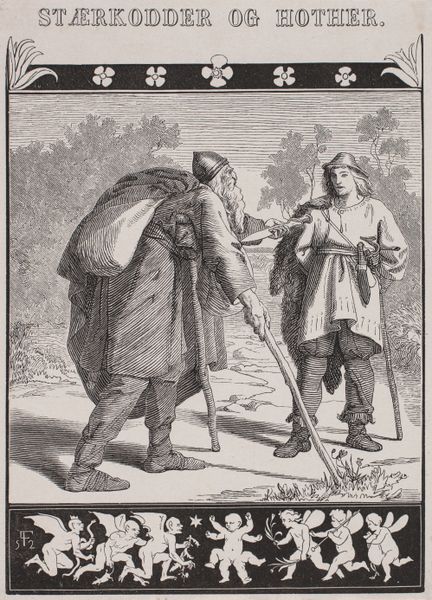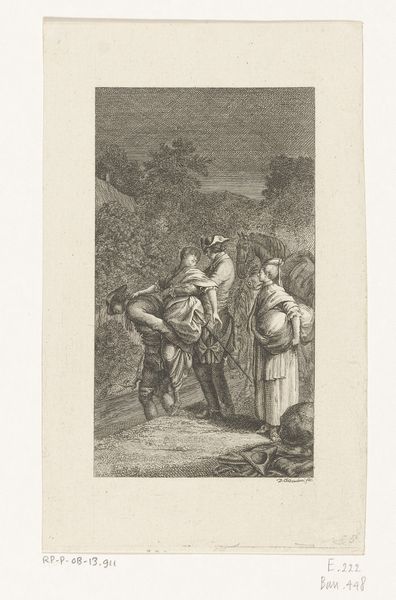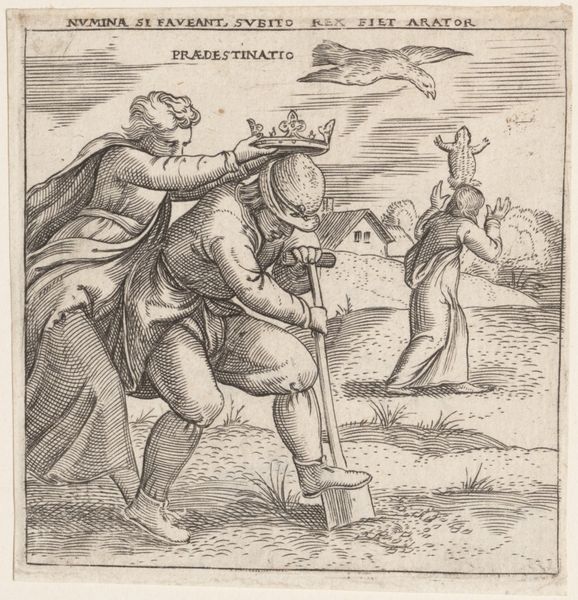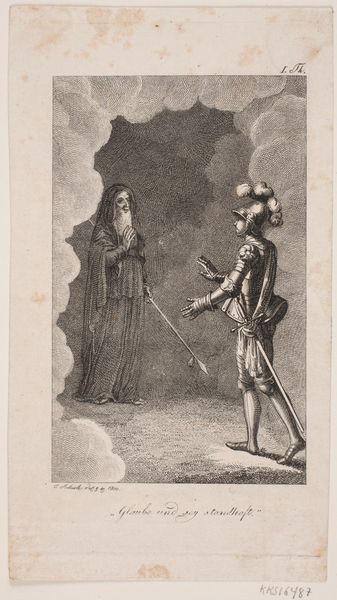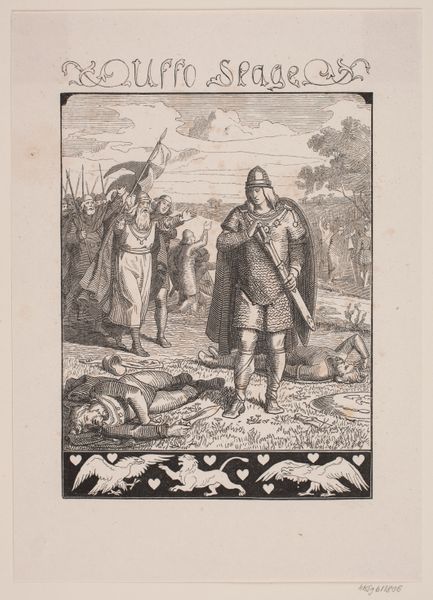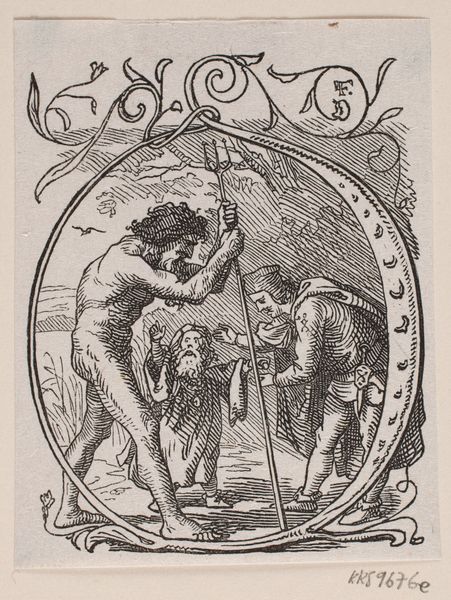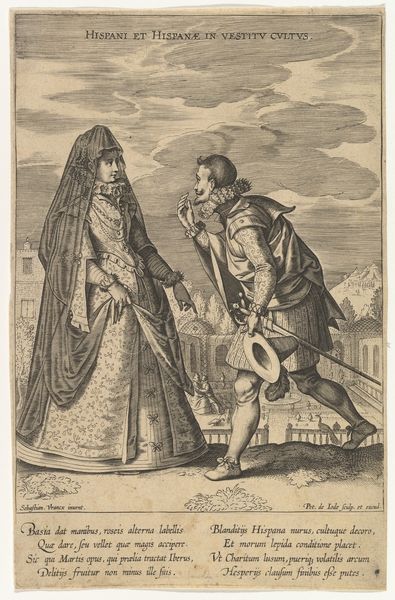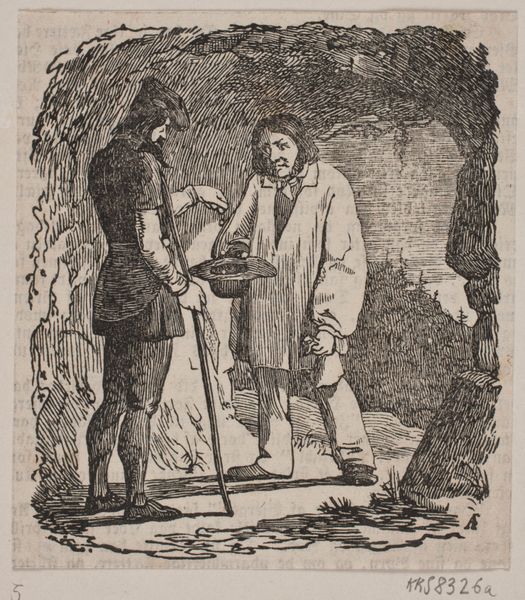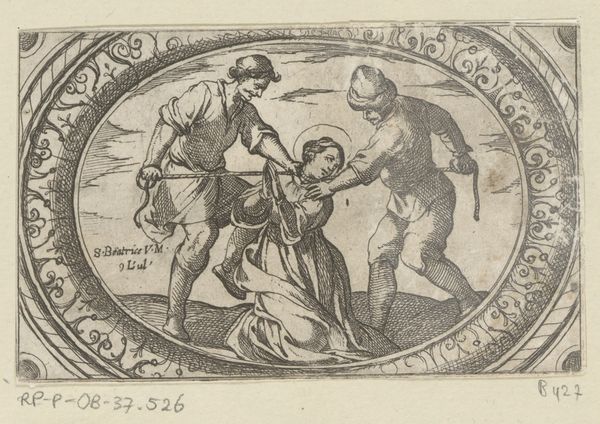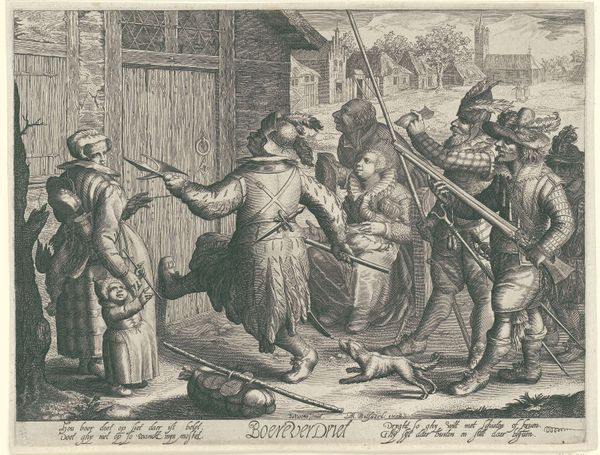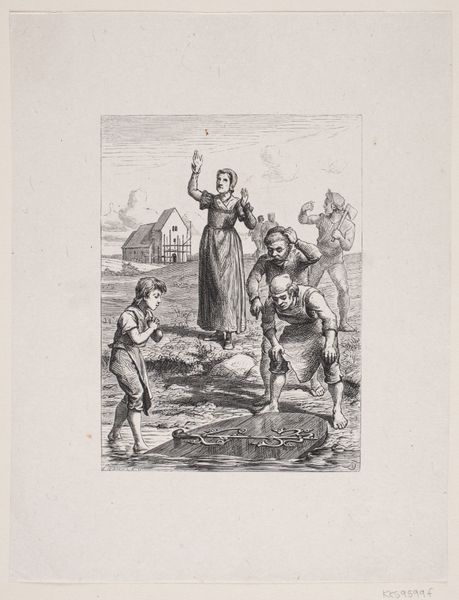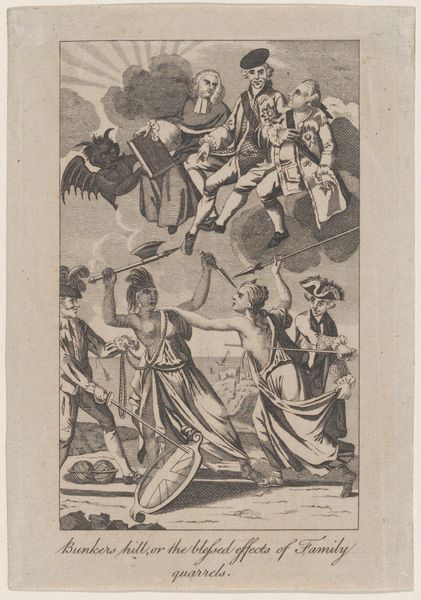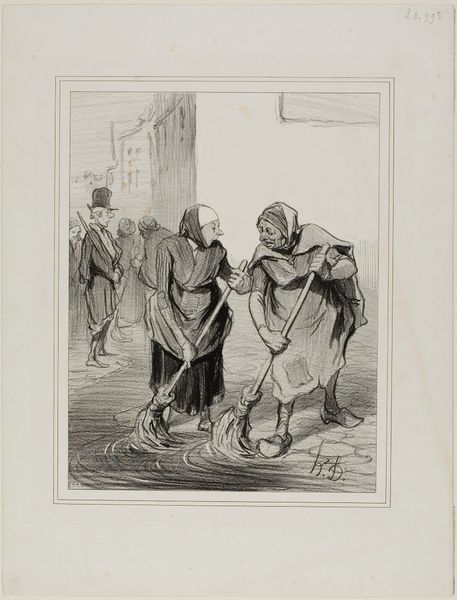
Dimensions: 195 mm (height) x 148 mm (width) (bladmaal)
Curator: This is Johan Aagaard’s 1852 woodcut, "Stærkodder og Hother," currently held at the SMK, Statens Museum for Kunst. The piece depicts two figures in what appears to be a meeting. Editor: It strikes me immediately as both ethereal and grounded. The crispness of the woodcut creates a striking contrast with the narrative's mystical or folkloric elements. There’s an interesting tension in how it feels both old and fresh at the same time. Curator: Yes, the materiality here is crucial. Consider the labor involved in creating such detail through woodcutting. The precise carving needed to achieve those fine lines and textures indicates skill, time, and a direct relationship between the artist and the medium. There’s an argument to be made here about the elevation of craft within high art practices of the Romantic era. Editor: Absolutely. And contextualizing this piece, we see it emerging in a period where national identity and mythology were heavily intertwined in Denmark. These figures, Stærkodder and Hother, are characters drawn from Norse sagas. I'm curious about the power dynamics at play between these two characters - is it mentorship? Or perhaps something more contentious, a negotiation of masculine power during a turbulent historical period. Curator: Thinking about process further, we can also consider the print as a means of reproduction and dissemination. It made this narrative accessible to a wider audience. Aagaard wasn’t just crafting a unique art object, he was participating in the production of culture and shaping of national myth. Editor: The figures themselves deserve attention, too. Hother's youthful posture stands in direct opposition to Stærkodder, hunched and carrying his sack. What are we supposed to glean from their interaction, this handoff or offering, when we consider the weight of legacy each bears? The artist asks the viewer to negotiate intergenerational differences. I wonder how audiences in 1852 interpreted this encounter given their social contexts. Curator: So, ultimately, viewing "Stærkodder og Hother" allows us a glimpse into not just a story, but the hands that shaped it, literally and figuratively. Editor: And into a pivotal period of cultural and national construction—we begin to grasp its complex sociopolitical environment.
Comments
No comments
Be the first to comment and join the conversation on the ultimate creative platform.
